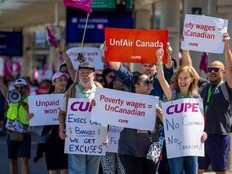EDITORIAL: Is this Carney’s idea of restraint?

Article content
While Prime Minister Mark Carney promised in his throne speech that his government would “spend less so Canadians can invest more,” his government’s main spending estimates for this year — released on the same day — told a different story.
Preliminary projections call for an 8.4% increase in federal spending this fiscal year — $486.9 billion compared to $449.2 billion last year.
It’s also predicted that the government will pay $49.06 billion in interest on the federal debt this year — more than it plans to spend on national defence ($35.7 billion) and the department of housing ($9.1 billion) combined.
Carney’s throne speech, read by King Charles, promised his government would be “guided by a new fiscal discipline,” reducing annual increases in the federal operating budget from 9% under the Justin Trudeau government, to below 2% going forward.
To achieve that, Carney is dividing the federal deficit into two components: The day-to-day cost of running the government and capital spending on infrastructure.
In his election campaign platform released April 19, Carney said the federal operating deficit would shrink from $9.2 billion this fiscal year (2025-26), to $9.1 billion in 2026-27 and $8.6 billion in 2027-28, with a $222.4 million surplus in 2028-29.
But, when you add in the capital spending deficits — since no matter what it’s called, it’s financed by taxpayers — those deficits increase to $62.3 billion in this fiscal year, $59.9 billion in 2026-27, $54.8 billion in 2027-28 and $47.8 billion in 2028-29.
In total, Carney’s campaign platform called for $130 billion in new spending over four years with total deficit spending of $224.8 billion.
That’s 71% higher than the $131.4 billion in total deficits the Trudeau government projected in its fall economic statement released last December, although in fairness, had Trudeau run again instead of resigning, his numbers would have been higher than last year’s estimates.
In any event, the main estimates explain why Carney didn’t want to release a budget this spring.
Indeed, according to Finance Minister Francois-Philippe Champagne, the original plan was to wait until next year to produce a budget, although Carney now says it will be delivered in the fall.
We’ll have to wait until then to see how Carney’s budget squares with his throne speech promise to “spend less so Canadians can invest more.”











Postmedia is committed to maintaining a lively but civil forum for discussion. Please keep comments relevant and respectful. Comments may take up to an hour to appear on the site. You will receive an email if there is a reply to your comment, an update to a thread you follow or if a user you follow comments. Visit our Community Guidelines for more information.